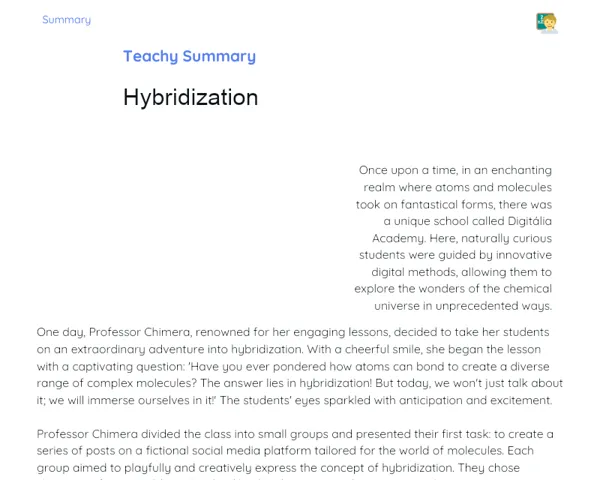Objectives
1. 🔍 Identify and Name: Learn to accurately identify and name nitriles and isonitriles using the IUPAC nomenclature rules.
2. 🧠 Differentiate Compounds: Enhance your ability to distinguish between nitriles, isonitriles, and other organic compounds by examining their structures and functions.
Contextualization
Did you know that nitriles and isonitriles, although structurally straightforward, play vital roles in various practical applications? For example, nitriles are extensively used in producing acrylonitrile, a key monomer in making synthetic fibers and plastics. On the other hand, isonitriles are acknowledged for their roles as intermediates in biochemical and pharmaceutical reactions, making them essential in the realm of organic chemistry. Grasping the nomenclature and characteristics of these compounds is crucial for any student or professional engaged in organic chemistry!
Important Topics
Nitriles
Nitriles are organic compounds featuring the functional group -C≡N (cyano). This group is significant in the industry, serving as a key precursor in synthesising various chemicals, including acrylonitrile, which is pivotal in acrylic fiber production. According to IUPAC nomenclature, nitriles are named by taking the longest carbon chain incorporating the cyano group as a prefix and appending the suffix 'nitrile'. For instance, CH3-C≡N is referred to as methyl cyanide.
-
Nitriles exhibit high polarization due to the nitrogen atom's electronegativity, making them valuable in organic syntheses.
-
The cyano group can undergo nucleophilic substitution reactions, crucial for numerous industrial and pharmaceutical chemical processes.
-
The presence of the cyano group imparts significant characteristics to nitriles, including high melting and boiling points essential for industrial applications.
Isonitriles
Isonitriles, also called isocyanides, are organic compounds characterised by the general formula R-N≡C, where R represents an organic group. These compounds are notorious for their reactivity and significance in catalysis and organic synthesis. In IUPAC nomenclature, the suffix 'isonitrile' is employed, with the carbon corresponding to nitrogen classified as carbon 1. For example, CH3-N≡C is termed methyl isonitrile.
-
Isonitriles are known for their instability, a trait that renders them useful in organic synthesis reactions and as intermediates in developing pharmaceuticals.
-
The isonitrile group (R-N≡C) readily engages with nucleophiles, taking part in unique reactions like the Simmons-Smith addition, showcasing their utility in various synthesises.
-
One can identify the presence of isonitriles in compounds through specific tests, such as the carbamoylation test.
Structural and Functional Differences
Even though both nitriles and isonitriles feature the cyano group, their structures and properties are markedly distinct. Nitriles have a cyano group attached to either an aliphatic or aromatic carbon, whereas isonitriles have a cyano group directly linked to nitrogen. This structural variance results in different reactivity levels and practical applications for these compounds within organic chemistry.
-
Nitriles display a more moderate reactivity than isonitriles due to the stability offered by the carbon in the cyano group, affecting the chemical reactions in which these compounds can engage.
-
Isonitriles are recognised for their nucleophilic properties, making them advantageous in addition and insertion reactions.
-
Understanding these distinctions is critical for synthetic chemistry and pharmacology, influencing bioactive compound design and synthesis.
Key Terms
-
Nitriles: Organic compounds containing the functional group -C≡N, commonly used as intermediates in organic and pharmaceutical syntheses.
-
Isonitriles: Compounds represented by the general formula R-N≡C, highly reactive and essential in catalysis and organic synthesis.
-
Functional Group: An atom or group of atoms that determine a molecule's reactivity, such as the cyano group (-C≡N) present in nitriles and isonitriles.
-
IUPAC Nomenclature: An international system for chemical naming that standardises compound nomenclature for clearer scientific communication.
For Reflection
-
How do the structure and reactivity of nitriles and isonitriles influence their practical applications in chemistry and biology?
-
In what ways does accurate nomenclature of these compounds impact clarity and effectiveness in scientific communication?
-
What challenges do you foresee in applying IUPAC nomenclature rules in real laboratory settings or industrial contexts?
Important Conclusions
-
We reviewed the IUPAC nomenclature of nitriles and isonitriles, underscoring the significance of accurately identifying these compounds for industrial and pharmaceutical applications.
-
We highlighted the unique properties and reactivities of nitriles and isonitriles, stressing how their structural differences shape their reactive functions and practical uses.
-
We examined how these compounds are applicable in real-world scenarios, such as in the pharmaceutical industry and materials research, emphasising the importance of studying organic chemistry.
To Exercise Knowledge
- Create a Concept Map: Develop a concept map linking the structure, nomenclature, and applications of nitriles and isonitriles. 2. Solve Problems: Engage with nomenclature and structural problems to reinforce what you have learned. 3. Simulate Reactions: Illustrate chemical reactions involving nitriles and isonitriles, specifying the products formed and the requisite conditions.
Challenge
Chemical Detective Challenge: You have a series of bottles with unidentified compounds. Leverage your newly acquired skills to determine which bottles contain nitriles, isonitriles, or other compounds. Present your findings and substantiate your choices in a comprehensive report!
Study Tips
-
Utilise flashcards to memorise IUPAC nomenclature rules and the structural traits of nitriles and isonitriles.
-
Watch videos of practical demonstrations and experiments to visualise the behaviour of these compounds in chemical reactions.
-
Engage in online forums or discussion groups to share experiences and resolve doubts with fellow students or professionals in your field.


